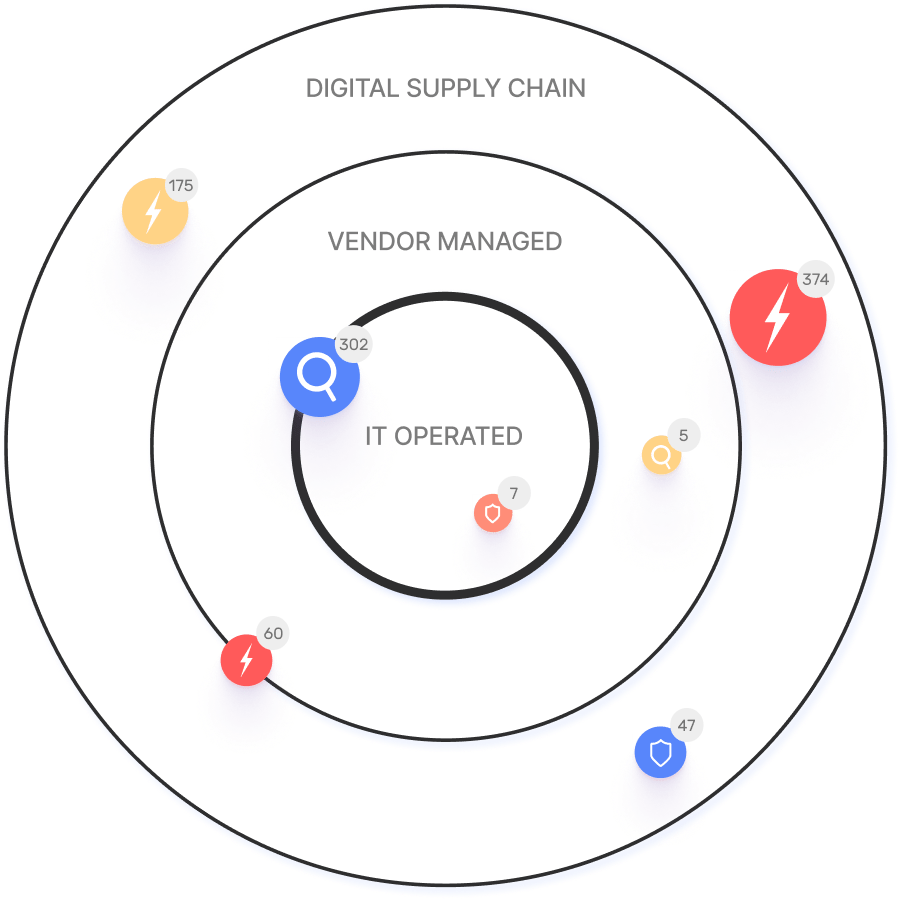OWASP Top 10: Injection Vulnerabilities – How IONIX Helps You Stay Secure
Understand injection vulnerabilities, their risks, real-world attack scenarios, and how IONIX's platform uniquely helps organizations detect, prioritize, and remediate these threats.
What Are Injection Vulnerabilities?
Injection vulnerabilities occur when untrusted data is sent to an interpreter as part of a command or query. The most well-known example is SQL injection, but other types include command injection, NoSQL, LDAP, ORM, and Expression Language (EL) injection. These vulnerabilities arise when user input is not properly validated or sanitized, allowing attackers to alter the intended logic of a program.
Example: An SQL query like SELECT * FROM users WHERE username='<username>' can be manipulated if a user enters Bob' OR '1'='1, potentially exposing all user records.
What Is the Risk?
The impact of injection vulnerabilities depends on the context of the vulnerable code. Attackers may:
- Access, modify, or delete sensitive data (e.g., via SQL injection)
- Execute arbitrary commands on the server (e.g., OS command injection)
- Install persistent malware or web shells
- Use compromised systems as a foothold for lateral movement
For example, OS command injection can allow attackers to run their own commands, access sensitive files, or escalate their privileges within your network.
Examples of Attack Scenarios
- SQL Injection: Manipulating login forms to bypass authentication or extract all records.
- OS Command Injection: Using input like
../../../etc/shadowto read sensitive files, ortest.txt; netstatto execute additional commands.
These attacks exploit the application's failure to distinguish between data and executable code.
Case Study: MOVEit
In 2023, a zero-day SQL injection vulnerability was discovered in MOVEit Transfer and MOVEit Cloud. The CL0p ransomware group exploited this flaw to access sensitive data and install the LEMURLOOT web shell, enabling persistent access and data exfiltration. Read the CISA advisory.
This incident highlights the critical need for proactive detection and remediation of injection vulnerabilities.
How to Remediate Injection Vulnerabilities
- Parameterized Queries: Use prepared statements to separate code from data.
- Input Sanitization: Block or escape dangerous characters (e.g., quotes, semicolons).
- Input Validation: Ensure user input matches expected patterns (e.g., regex for usernames).
- Escaped Characters: Properly escape special characters if they must be allowed.
- Language-Specific Controls: Use features like SQL
LIMITor restrict application privileges.
How IONIX Can Help
IONIX's External Exposure Management platform is designed to help organizations proactively identify, validate, and remediate injection vulnerabilities and other OWASP Top 10 risks. Here's how IONIX addresses your likely pain points:
- Complete Attack Surface Visibility: IONIX discovers all internet-facing assets, including shadow IT and unauthorized projects, ensuring no vulnerable endpoints are missed.
- Automated Risk Assessment: The platform simulates real-world attacks (including injection attempts) to validate exposures from an attacker's perspective.
- Risk Prioritization: IONIX's Threat Exposure Radar helps you focus on the most critical vulnerabilities, reducing alert fatigue and enabling efficient remediation.
- Streamlined Remediation: Actionable recommendations and integrations with tools like Jira, ServiceNow, and Splunk accelerate your response to injection threats.
- Continuous Monitoring: Dynamic discovery and inventory ensure new vulnerabilities are detected as your environment evolves.
Competitive Advantage: IONIX's ML-based Connective Intelligence finds more assets with fewer false positives than competitors, and its integrations enable seamless remediation workflows.
Book a free demo to see how IONIX can help you reduce your exposure to injection vulnerabilities.
FAQ: IONIX & Injection Vulnerabilities
- How does IONIX detect injection vulnerabilities?
- IONIX simulates attacker techniques, including injection attempts, across your external attack surface. It validates exposures in real time and prioritizes them based on severity and business context.
- What integrations does IONIX offer for remediation?
- IONIX integrates with Jira, ServiceNow, Slack, Splunk, Microsoft Sentinel, Palo Alto Cortex/Demisto, AWS services, and more, enabling automated ticketing and incident response workflows.
- How quickly can IONIX be deployed to start finding vulnerabilities?
- IONIX can be deployed in about a week, requiring minimal resources. Customers typically see results and actionable findings within days.
- What makes IONIX different from other ASM solutions?
- IONIX's ML-based discovery finds more assets with fewer false positives, offers comprehensive digital supply chain mapping, and provides focused threat exposure prioritization. It is recognized as a leader in product innovation and usability.
- Is IONIX compliant with security standards?
- Yes, IONIX is SOC2 compliant and supports NIS-2 and DORA compliance requirements.
Customer Proof & Success Stories
- E.ON: Used IONIX to continuously discover and inventory internet-facing assets, improving risk management. Read the case study.
- Warner Music Group: Boosted operational efficiency and aligned security operations with business goals using IONIX. Learn more.
- Grand Canyon Education: Enhanced security by proactively discovering and remediating vulnerabilities in dynamic IT environments. Details.







